HOME S VVHER
Page 50
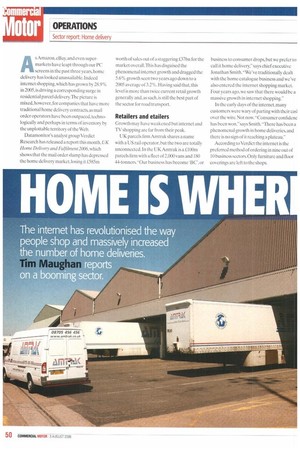
Page 51
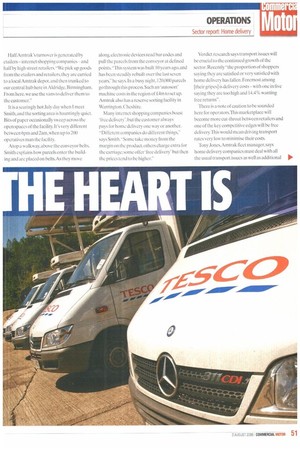
Page 52
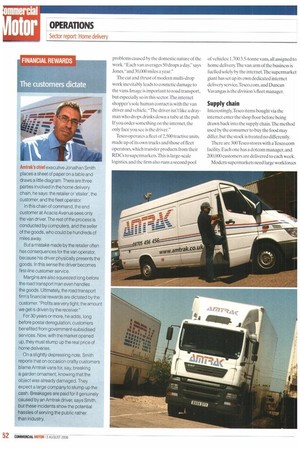
Page 53
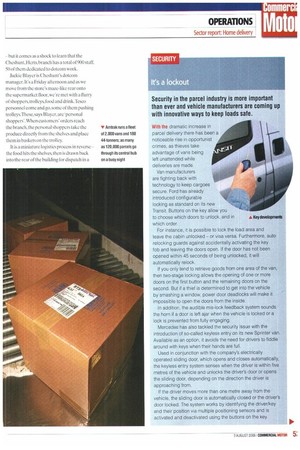
Page 54
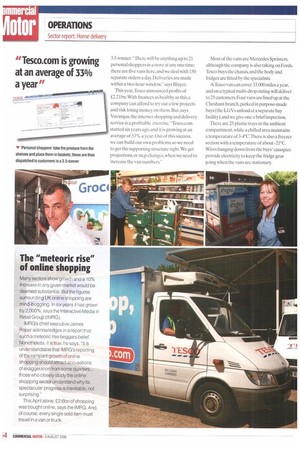
Page 55
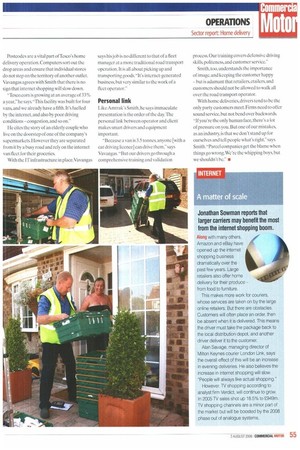
If you've noticed an error in this article please click here to report it so we can fix it.
The Internet has revolutionised the way people shop and massively increased the _number of home deliveries. erikirrinvirkeports on a booming sector.
As Amazon, eBay, and even supermarkets have leapt through our PC screens in the past three years, home delivery has looked unassailable. Indeed internet shopping, which has grown by 28.9% in 2005,is driving a corresponding surge in residential parcel delivery.The picture is mixed,however,for companies that have more traditional home delivery contracts, as mail order operators have been outpaced. technologically and perhaps in terms of inventory by the unplottable territory of the Web.
Datamonitor's analyst group Verdict Research has released a report this month, UK Home Delivery and Fulfilment2006, which shows that the mail order slump has depressed the home delivery market, losing it £585m worth of sales out of a staggering .£37bn for the market overall.This has disguised the phenomenal internet growth and dragged the 5.6% growth seen two years ago down to a 2005 average of 3.2%. Having said that,this level is more than twice current retail growth generally and, as such, is still the best part of the sector for road transport.
Retailers and etailers Growth may have weakened but internet and TV shopping are far from their peak.
UK parcels firm Amtrak shares a name with a US rail operator. but the two are totally unconnected. In the UK Amtrak is a £100m parcels firm with a fleet of 2,000 vans and 180 44-tonners.-Our business has become 'BC'. or business to consumer drops, but we prefer to call it home delivery," says chief executive Jonathan Smith."We've traditionally dealt with the home catalogue business and we've also entered the internet shopping market. Four years ago, we saw that there would be a massive growth in internet shopping."
In the early days of the internet. many customers were wary of parting with their cas1 over the wire Not now. "Consumer conlidenc has been won," says Smith. There has been a phenomenal growth in home deliveries, and there is no sign of it reaching a plateau.
According to Verdict the internet is the preferred method of ordering in nine out of 10 business sectors. Only furniture and floor coverings are left to the shops. Half Amtrak's turnover is generated by milers -intemet shopping companies and half by high street retailers.-We pick up goods from the etailers and retailers, they arc carried to a local Amtrak depot, and then trunkcd to our central hub here in Aldridge, Birmingham. From here, we use the vans to deliver them to the customer."
It is a searingly hot July day when I meet Smith, and the sorting area is hauntingly quiet. Bits of paper occasionally sweep across the open spaces of the facility It's very different between 6pm and 2am,when up to 200 operatives man the facility.
Atop a walkway, above the conveyor belts, Smith explains how parcels enter the building and are placed on belts. As they move along, electronic devices read bar codes and pull the parcels from the conveyor at defined points -This system was built 10 years ago. and has been steadily rebuilt over the last seven years." he says. In a busy night,120,000 parcels go through this process. Such an 'autosort• machine costs in the region of 14m to set up. Amtrak also has a reserve sorting facility in Warrington, Cheshire.
Many internet shopping companies boast 'free delivery', but the customer always pays for home delivery one way or another. "Different companies do different things," says Smith."Somc take money from the margin on the product, others charge extra for the carriage:some offerfree delivery' hut then the prices tend to be higher." Verdict research says transport issues will be crucial to the continued growth of the sector. Recently -the proportion of shoppers saying they are satisfied or very satisfied with home delivery has fallen. Foremost among [their gripes] is delivery costs with one in five saying they are too high and 14.4% wanting free returns".
There is a note of caution to be sounded here for operators.This marketplace will become more cut-throat between retailers and one of the key competitive edges will be free delivery.This would mean driving transport rates very low to minimise their costs.
Tony Jones,Amtrak fleet manager,says home delivery companies must deal with all the usual transport issues as well as additional problems caused by the domestic nature of the work.-Each van averages 50 drops a day," says Jones."and 30,000 miles a year.
The cut and thrust of modern multi-drop work inevitably leads to cosmetic damage to the vans. Image is important to road transport, but especially so in this sector.The internet shopper's sole human contact is with the van driver and vehicle. "The driver isn't like a drayman who drops drinks down a tube at the pub. If you order something on the internet, the only face you see is the driver."
Tesco operates a fleet of 2,500 tractive units. made up of its own trucks and those of fleet operators, which transfer products from their RDCs to supermarkets.This is large-scale logistics, and the firm also runs a second pool of vehicles:1,700 3.5-tonne vans, all assigned to home delivery.The van arm of the business is fuelled solely by the internet.The supermarket giant has set up its own dedicated internet delivery service,Tesco.com, and Duncan Vavangas is the division's fleet manager.
Supply chain Interestingly,Tesco items bought via the internet enter the shop floor before being drawn back into the supply chain.The method used by the consumer to buy the food may differ, but the stock is treated no differently.
There are 300 Tesco stores with a Tesco.com facility. Each one has a dotcom manager, and 200,000 customers are delivered to each week.
Modern supermarkets need large workforces but it comes as a shock to learn that the Cheshunt,Herts, branch has a total of 900 staff, 50 of them dedicated to dotcom work.
Jackie Blayer is Cheshunt's dotcom manager. It's a Friday afternoon and as we move from the store's maze-like rear onto the supermarket floor, were met with a flurry of shoppers, trolleys, food and drink,Tesco personnel come and go. some of them pushing trolleys:These, says Blaycr, are 'personal shoppers'.When customers' orders reach the branch,the personal shoppers take the produce directly from the shelves and place them in baskets on the trolley.
It is a miniature logistics process in reverse the food hits the shelves, then is drawn back into the rear of the building for dispatch in a 3.5-tonner."There will be anything up to 21 personal shoppers in a store at any one time; there are five vans here, and we deal with 150 separate orders a day. Deliveries are made within a two-hour window," says Blayer.
This year.TeSCO announced profits of £2.21bn. With finances as healthy as this, a company can afford to try out a few projects and risk losing money on them. But,says Vavangas, the interact shopping and delivery service is a profitable exercise."Tesco.com started six years ago, and it is growing at an average of 33% a year. Out of this success, we can build our own problems, so we need to get the supporting structure right. We get projections, or step changes, when we need to increase the van numbers." Most of the vans are Mercedes Sprinters, although the company is also taking on Fords. Tesco buys the chassis, and the body and fridges are fitted by the specialists.
A Tesco van can cover 33,000 miles a year, and on a typical multi-drop outing will deliver to 25 customers. Four vans are lined up at the Cheshunt branch, parked in purpose-made bays (the LGVs unload at a separate bay facility),and we give one a brief inspection.
There are 25 plastic trays in the ambient compartment, while a chilled area maintains a temperature of 34-V.:There is also a freezer section with a temperature of about -21°C. Wires hanging down from the bays' canopies provide electricity to keep the fridge gear going when the vans are stationary. Postcodes are a vital part ofTesco's home delivery operation. Computers sort out the drop areas and ensure that individual stores do not step on the territory of another outlet. Vavangas agrees with Smith that there is no sign that internet shopping will slow down.
-Tesco.corn is growing at an average of 33% a year," he says."This facility was built for four vans, and we already have a fifth. It's fuelled by the internet, and also by poor driving conditions congestion, and soon."
lie cites the story of an elderly couple who live on the doorstep of one of the company's supermarkets. However they are separated from it by a busy road and rely on the internet van fleet for their groceries.
With the IT infrastructure in place Vavangas says his job is no different to that of a fleet manager at a more traditional road transport operation. It is all about picking up and transporting goods." It's internet-generated business, but very similar to the work of a fleet operator."
Personal link
Like Amtrak's Smith, he says immaculate presentation is the order of the day. The personal link between operator and client makes smart drivers and equipment important.
"Because a van is 3.5 tonnes, anyone [with a car driving licence] can drive them," says Vavangas. "But our drivers go through a comprehensive training and validation process. Our training covers defensive driving skills. politeness, and customer service."
Smith, too, understands the importance of image, and keeping the customer happy -but is adamant that retailers, etailers, and customers should not be allowed to walk all over the road transport operator.
With home deliveries, drivers tend to be the only party customers meet. Firms need to offer sound senrice,but not bend over backwards. "If you're the only human face, there's a lot of pressure on you. But one of our mistakes, as an industry, is that we don't stand up for ourselves and tell people what's right,says Smith."Parcel companies get the blame when things go wrong. We're the whipping boys, but we shouldn't be." •




























































































































































































